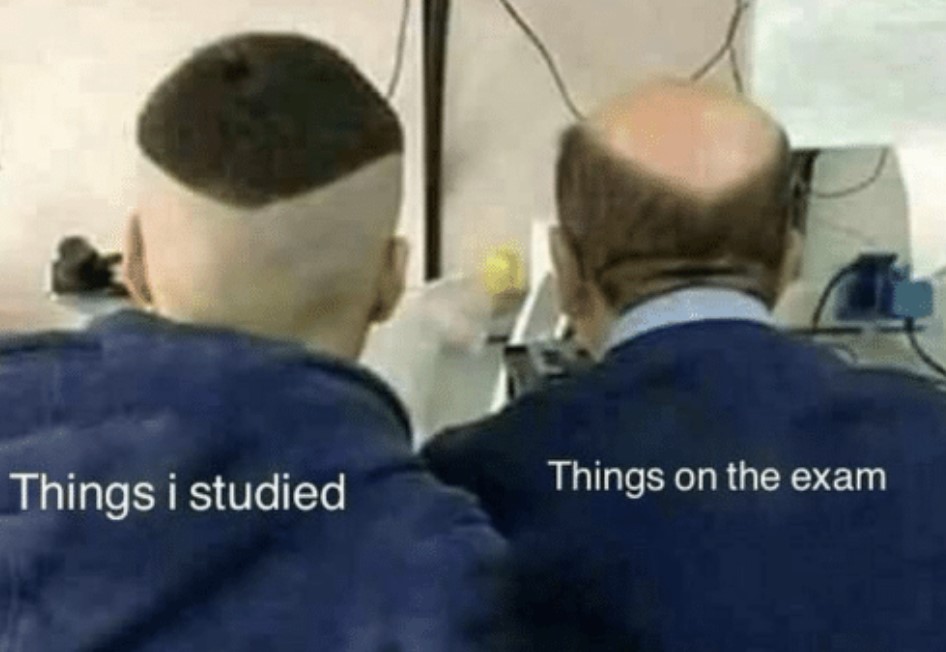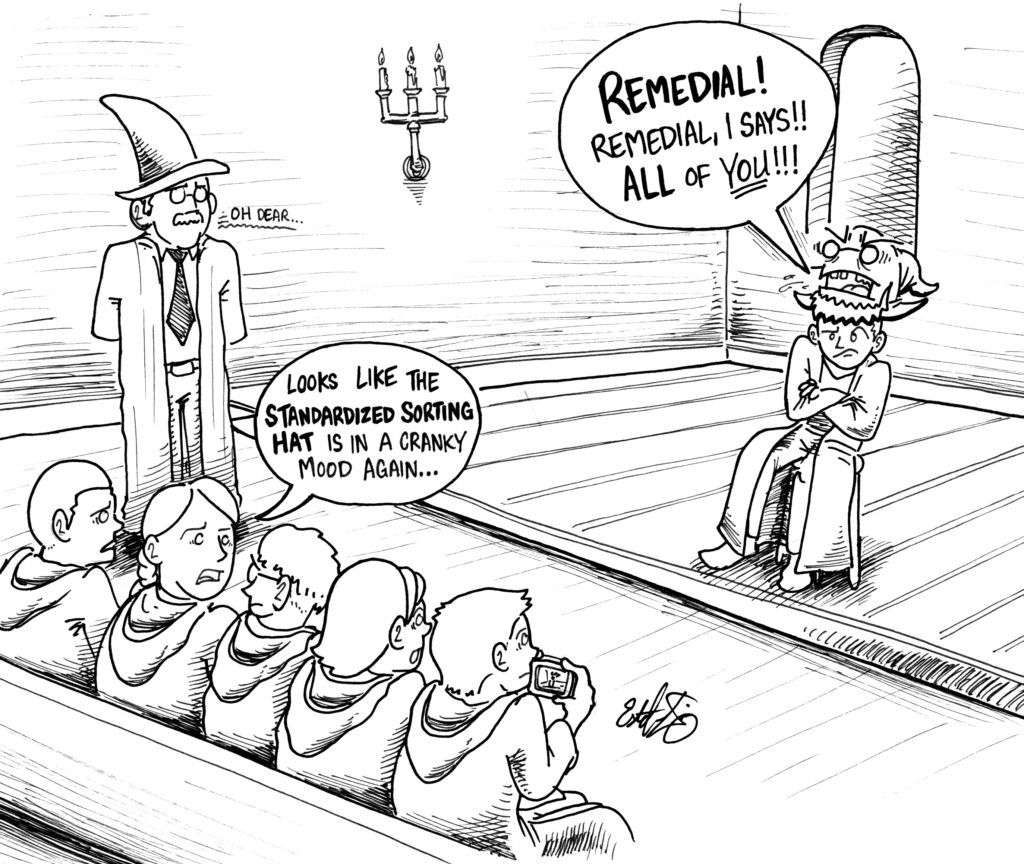The job interview process is a high-stakes dance that’s notoriously difficult and full of missteps — on both sides. (At least, in software engineering it is. If you care about another industry, <Jedi hand wave/> this is not the article you’re looking for.) Avoiding the missteps is an art, just like it is in dancing; we get better with practice, just like dancing; it’s a lot of fun when it goes well, just like dancing; and leading with dexterity is paramount. This article focuses on that last bit: not on what questions to ask or how to structure the time, but rather on artfully leading an interview. First, however — because it’s a crucial part of the interview context — we should start with how the job candidate views the process. Just like dancing.
Because while for Larry the Interviewer, it’s just a small fraction of his day — maybe an annoying one that pulls him from the dynamic programming problem he was definitely not working on — for Jane the candidate, it’s one of the most important events of her life. The median job tenure is about 4 years, so people will only have somewhere around 10 jobs their whole professional life. And each of those jobs is going to significantly affect Jane’s life both during, and after, it. The CV builds on the shoulders of the previous job, yes, but work is also where we spend the bulk of our weekday, make friends, and develop a large part of our identity.
So what does Jane go into this high stakes dance equipped with? If the company is large, maybe she can get a sense of the general culture from Glassdoor, or news articles, or social media. Otherwise, maybe a sense of how it wants to be seen, from its marketing. But even then: what will her daily life be like there? Would she like her new boss? Her teammates? The bureaucracy? The tasks she’ll be working on over the next year? Four years? Unless she knows someone on the inside, these questions mostly won’t get answered until after the start date. Sure, she’ll get to peek in now and then through cracks in the process and through the five minutes of each interview in which she can ask stuff, but: largely unanswered. Which means it all adds up to a big gamble.
The gamble is better for more mercurial and adaptable personalities than those more averse to change, but your resume can only tolerate a couple of quick stints before it starts getting tossed aside. So it’s a big gamble for everyone. Or rather, I should say “for every job searcher”, because well… it’s a small gamble for Larry the Interviewer. Worst case for him? It isn’t even giving his “thumbs up” to a terrible employee — because someone truly terrible will get fired before too long. No, the worst case is that he gives his thumbs up to a really annoying Taylor that ends up on his team and really annoys him for the next 4 years. And also produces mediocre work that Larry then has to constantly deal with. But Taylor isn’t annoying enough and the work just isn’t bad enough to get fired or even be put on a PIP. Taylor kind of coasts just baaaarely on the good side of the policy. And in doing so, makes Larry’s work life feel like a chirping smoke alarm that he can never find. That is the worst case for Larry.
The best case? He ends up with a really awesome coworker. Which, depending on the existing coworkers, may or may not matter a lot. But in any case except for the narrow and unlikely one of Taylor, the stakes for Larry are much, much, much lower than for Jane. And yet, this is who decides Jane’s fate.
The irony is that all of us will — at different times — be the Jane, and most of us will also be the Larry at other times. And when we are the Larry, interviewing a job candidate, do we act as the interviewer we’d like to have interview us, when we’re searching for a job? When I grudgingly leave the house, I usually drive, and sometimes I walk, and sometimes I bike. And what I find fascinating is that when I’m a driver, I get mad at other drivers, when I’m a cyclist I get mad at drivers, and when I’m a pedestrian, I get mad at everyone. Even though I know exactly what challenges they’re all going through.
Through this lens, how should Larry — all of us, when we are the Larry — conduct his interviews? How can we be the Larry we want to see in the world?
Larry does have a concrete output from the interview; he needs to answer one simple question: is Jane likely to be successful in this role? “But wait,” you ask, “can Jane’s ideal Larry even answer that question? Can he both be empathetic and figure out if she should be hired?” To which I say: “not only can he, but that’s the best way to do go about it!” Let me illustrate by looking at some questions Larry should not be trying to answer:
- Did Jane answer all my questions correctly?
- Was Jane quick on her feet and graceful under pressure?
- Did Jane pick up on my algorithmic hints?
- Was her solution complete?
- Do I like Jane, as a human being? Could we be friends?
Those are certainly signals one can get in an interview, but are they relevant to her success in the role? Does her answering all of Larry’s questions correctly mean there’s a good chance she’ll get a high performance rating next year? It depends on the questions, right? Well then, what about the inverse: does getting answers wrong correlate with bad performance reviews? Or does it correlate with nervousness? Or miscommunication? Or ignorance of a concept that Jane could learn in the first week on the job?
The hard truth is that while most interviews test something, that something is more likely to be “ability to pass our interview” than “ability to do the job well”. Which — if the abstract interview is indeed a conscious choice, and more often it is not — then the argument for it goes like this:
We want people that will do what they need to in order to succeed; if they study hard for our arbitrary and irrelevant interview process and pass it, it means they (a) really want to work here, and (b) can do the same for a real-world project
Even for well-known companies that can attract enough people to run their gauntlet, this is of dubious value, because they’re filtering for a specific criteria: studiousness; and simultaneously filtering out many that are at odds with it, starting with people that don’t have the luxury of time to study for their interview.
Instead, I think interview questions should be relevant for the job and tailored to illuminate whether Jane will be successful in it. Does it matter if Jane came up with a coding solution in 10 minutes versus 20? How much time would she have in the course of her job for that problem? Does the job require her to be well-versed in algorithms? Even if Stack Overflow didn’t exist. Is it relevant that she didn’t finish the last part, even though she explained how it would work? Are the people we like more productive than the ones we don’t? Do these rhetorical questions make my point?
Which is that the interview is not a test and it’s certainly not an interrogation. It is above anything else a conversation, ideally between equals, in which both parties are trying to figure out if an employment arrangement would be a win/win scenario. And as the interviewer, by leading it with empathy, you accomplish two things:
- Have a much better chance at arriving at the truth
- Leave the candidate with a great impression
So how should Larry approach the interview? I like to think about role models, because we humans are great at mimicking, and in this case I think the right archetype is a podcaster. They have a guest on their show and they generally try to make the experience pleasant, to keep the content interesting, and to really get at what makes their guest tick in their particular way. If they have an actor on, they try to figure out what makes them a great actor; if it’s a business tycoon, what makes them great at business; if it’s a scientist, what makes them great at science. And similarly, Larry’s job is to figure out what makes his guest great at programming.
In order to successfully do that, the guest has to first and foremost be comfortable. People won’t let you in unless they’re comfortable. And if they won’t let you in, it is a giant barrier to understanding them. So Larry should spend some time in the beginning of the interview breaking that ice. He should make small talk — genuine small talk, not awkward conversation about the weather. Tell Jane a little about himself: what he does at the company, what he’s passionate about in his work, and what his background is. Things that will give Jane an understanding of him and help them find common ground. It’s not only worth the investment, but it’s what makes the rest of the interview worthwhile.
Once a good rapport has been established — or Larry’s given up on such happening — only then should he go into the topics he needs to cover. And he should always remember to treat Jane as he would a valued guest in his home. To be kind, to be forgiving, and to give her the benefit of the doubt. If she says something that sounds incorrect, he should make sure it’s not due to a simple mistake or misunderstanding. He should ask polite questions that help him understand how much Jane knows and understands about graph traversal or whatever — not merely that she does (or doesn’t) know that those words are the answer to his question. Because in the end, Larry’s job isn’t that of a proctor, to simply grade Jane on her performance as if this were an audition or a midterm exam. Larry’s job is actually much more difficult: it’s to create, in 45 to 60 minutes, a sorely incomplete mental model of Jane from a certain angle — be it programming ability or cultural fit or leadership style or what have you — and to then decide if that mental model is a good match to fill the open role.
Again: this is hard and it takes a lot of practice to do well, just like dancing. But taking shortcuts will just lead to lots of false positives or negatives. Tech companies love to industrialize the process and create complex questions with “objective” answers and rubrics that tally up those answers into a simple pass/fail exam and then also point to that process when talking about fairness. But in truth, there’s nothing fair about standardized tests — which is why higher education is finally moving away from the SATs.
They add a veneer of objectivity on top an industrialized process that answers not so much what a person understands, but what they’ve been exposed to and what they can quickly recall in a stressful situation. It’s like being tested on “ticking time bomb diffusal” for a job making watches. And the opportunities for subjectivity still abound: from how comfortable or nervous the candidate is, to how many hints they’re given, to how much sleep they’ve gotten the night before, to whether they’ve seen a similar question recently, and to the leniency of the proctor.
What sets Oxford and Cambridge apart from most other universities is that they use the Tutorial System, in which students learn the subject matter in whatever way makes sense, meet in very small groups with a tutor and have a discussion — in which it will become readily apparent how well they understand the subject.
It has been argued that the tutorial system has great value as a pedagogic model because it creates learning and assessment opportunities which are highly authentic and difficult to fake.
from Tutorial System at Wikipedia
Software interviews of a similar ilk have the same value.
But the one thing to remember is that regardless of the questions we ask when we’re being the Larry — no matter how good or fair or comprehensive they are — the questions are just a means to an end, and not the end. They are a conversation starter, and it’s up to us to guide that conversation in such a way that will allow us to understand our guest to such a degree that we can answer the only question that matters: “is this person likely to be successful in this role?”




Pingback: A Tale of Two Interview Loops | Gabriel Jiva